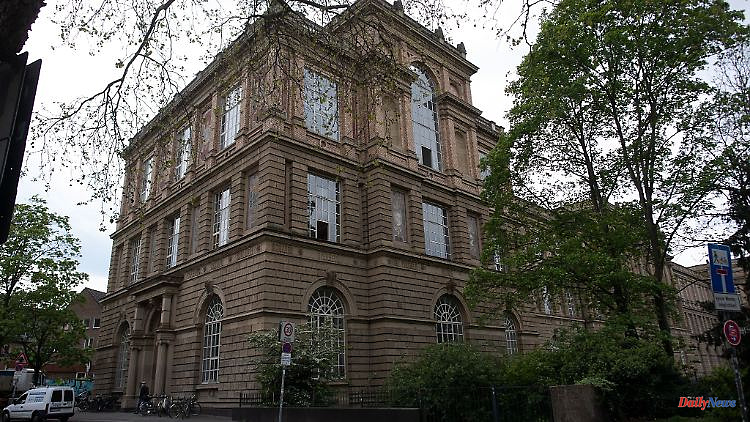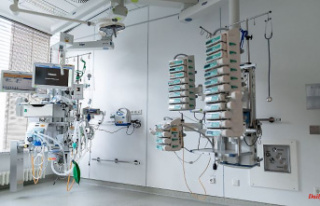On the occasion of the 250th anniversary of the Düsseldorf Art Academy, a work by Ewald Mataré was handed over to it. The bronze relief, weighing 268 kilograms, commemorates one of the important teachers at the academy.
Düsseldorf (dpa / lnw) - In the 250th year of its existence, the Düsseldorf Art Academy can record an important new addition as a kind of homecoming. The 268-kilogram bronze relief "Woman with cattle" by Ewald Mataré (1887-1965) has been hanging in the auditorium of the art academy since Wednesday, as its acting director Johannes Myssok announced on Thursday.
The permanent loan from the Neue Nationalgalerie Berlin had previously been on display at the European Court of Justice in Luxembourg for 45 years. Ewald Mataré was expelled from the academy together with Paul Klee in 1933 by the Nazis. After the Second World War he headed the sculpture class there. One of his students was Joseph Beuys.
The loan was "a bang," said Myssok. It is great to have received such a monumental major work by Mataré from 1930/31 for the anniversary year. The loan agreement runs for an initial period of four years.
Myssok announced a series of events for the anniversary year. The academy will open up to the city and the region and will also be visible outside its walls. The question "What is art today?" in the centre. There is a "return of the political," said the acting head of the academy.
The 570 art students were concerned with the issues of gender equality and climate change. "It's about finding an artistic answer to the challenges of the time." The traditional academy tour, the annual exhibition of art students whose works regularly attract tens of thousands of art lovers, starts next week.
In the anniversary year, a large exhibition is also planned in the academy gallery, the "Memorial of the Art Academy", and an art book that reviews the 250 years of art history of the world-famous art academy.
Elector Carl Theodor founded the Düsseldorf Academy in 1773 as the "Electoral Palatinate Academy of Painting, Sculpture and Architecture". In 1819 it became the Royal Art Academy of Prussia.
During the Weimar Republic, the art academy was considered the center of modernism and the avant-garde until the Nazis put an end to it. In the post-war period, it produced world-class artists such as Gerhard Richter, Joseph Beuys, Günther Uecker, Andreas Gursky and Jörg Immendorff. As early as the 19th century, the Düsseldorf school of painting achieved international renown.
The relief was commissioned by the renowned Jewish architect Erich Mendelsohn for the music room of the Grunewald villa "Am Rupenhorn 6" in Berlin. When the Nazis seized power in 1933, Mendelsohn fled to Palestine. Mataré's bronze relief was left in the house.












